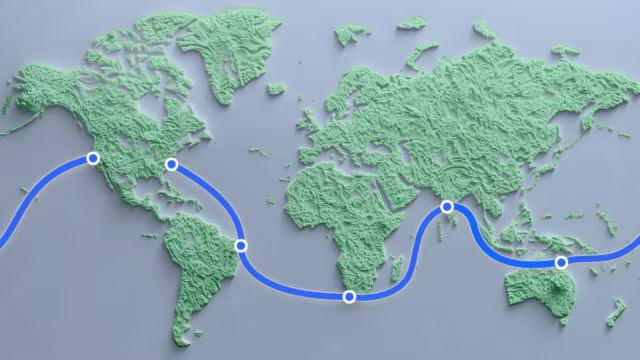Gulf of Eilat (Gulf of Aqaba)
Syllabus: GS1/ Places In News
In News
- Recent research has uncovered a significant pause in coral reef growth in the Gulf of Eilat (Gulf of Aqaba).
About Gulf of Eilat
- Location: Northern tip of the Red Sea, between the Sinai & Arabian Peninsulas.

- Bordering Countries: Egypt, Israel, Jordan, and Saudi Arabia.
- Depth & Contrast: The Gulf of Aqaba is deep (1,850 meters), unlike the much shallower Gulf of Suez (100 meters).
- Coral Resources: The Gulf of Aqaba is notable for its coral reef ecosystems, which are among the world’s northernmost coral reefs.
Source: TH
Development and Commercialisation of Typhoid Vaccine
Syllabus: GS2/ Health
In News
- The Indian Council of Medical Research (ICMR) is seeking expressions of interest (EoI) for the joint development and commercialization of a Typhoid and Paratyphoid vaccine.
| – Manufacturers/companies must meet technical requirements and will be shortlisted based on research and development plans, facilities, and capabilities. |
Typhoid
- Typhoid is a bacterial infection caused by Salmonella Typhi, spread through contaminated food, water, or contact with infected individuals.
- It can be life-threatening without treatment, and antibiotics like chloramphenicol, ampicillin, or ciprofloxacin are used for treatment.
- Typhoid Burden: Typhoid fever is a significant public health issue in India, with approximately 4.5 million cases annually, especially in urban areas, making it a major health concern.
- Vaccines in India: Typhoid vaccines available in India include Typbar-TCV, Ty21a, Typhim Vi, and Typherix. Typhoid conjugate vaccines (TCVs) are for children over 6 months, while Vi vaccines are for children over 2 years. TCVs are currently available only in the private sector.
- Latest Developments : The ICMR-National Institute for Research in Bacterial Infections (NIRBI) has developed a technology for an enteric fever vaccine based on outer membrane vesicles from two strains of typhoidal Salmonella.
Source :TH
Medical Termination of Pregnancy (MTP) Act
Syllabus: GS2/Health
Context
- The Bombay High Court allowed a woman to terminate her 25-week pregnancy in a private hospital.
Abortion Laws in India
- The Medical Termination of Pregnancy (MTP) Act permits abortions in specific predetermined situations.
- Before the enactment of the MTP Act in 1971, the medical termination of pregnancy was governed by the Indian Penal Code (IPC).
- Most of these provisions aimed at criminalising abortions, except where the procedure was done in good faith in order to save the woman’s life.
- The provisions failed to make a distinction between wanted and unwanted pregnancies, making it extremely onerous for women to access safe abortions.
- In 1971, the MTP Act was enacted by Parliament as a “health” measure, to decriminalise abortion in certain defined circumstances and under due supervision of registered medical practitioners.
- A pregnancy could only be terminated under Section 3(2) if it did not exceed 20 weeks.
- It laid down that the pregnancy can be terminated on the opinion of one doctor if it is done within 12 weeks of conception and two doctors if it is done between 12 and 20 weeks.
- The 2021 amendment to the MTP Act: Rule 3B permitted abortion up to 24 weeks for women due to change of marital status during the ongoing pregnancy, besides in cases of survivors of rape, victims of incest, and other vulnerable women.
- It also replaced the word “by any married woman or her husband” with the words “any woman or her partner”, bringing within the fold of the law pregnancies outside marriage institutions.
- After 24 weeks, the MTP Act requires medical boards of expert doctors to be set up by the state government in each district, which opine on whether to allow termination of pregnancy in case of substantial foetal abnormality.
Source: IE
Russia’s MRNA Based Cancer Vaccine
Syllabus: GS2/ Health
In News
- Russia has announced the development of an mRNA-based personalized cancer vaccine, expected to be available free for patients by early 2025.
| Messenger RNA (mRNA) – It is a type of single-stranded RNA involved in protein synthesis. mRNA is made from a DNA template during the process of transcription. – The role of mRNA is to carry protein information from the DNA in a cell’s nucleus to the cell’s cytoplasm (watery interior), where the protein-making machinery reads the mRNA sequence and translates each three-base codon into its corresponding amino acid in a growing protein chain. |
mRNA Vaccine Technology
- Messenger RNA vaccines gained attention during the COVID-19 pandemic following the use of this technology to manufacture vaccines.
- mRNA vaccines provide genetic information to teach the body’s cells to produce antigens, which can trigger an immune response to target and attack cancer cells.
- Features : mRNA cancer vaccines are a form of immunotherapy, designed to boost the immune system to detect and destroy cancer cells, preventing their spread without damaging healthy cells.
- Unlike traditional vaccines, cancer mRNA vaccines are personalized for each patient to target specific antigens present on their tumors, making them potentially more effective.
Global Research:
- Other countries, including the UK and the US, are also researching cancer vaccines.
- The UK’s NHS launched the Cancer Vaccine Launch Pad in collaboration with BioNTech, and CureVac in the US has announced a promising mRNA cancer vaccine for glioblastoma.
| Do you know ? – Cancer is a large group of diseases that can start in almost any organ or tissue of the body when abnormal cells grow uncontrollably, go beyond their usual boundaries to invade adjoining parts of the body and/or spread to other organs. – In India, around 100 out of every 1 lakh people are diagnosed with cancer. – The Union Budget 2025-26 emphasizes strengthening cancer care with initiatives like Day Care Cancer Centres and customs duty exemptions on life-saving drugs. |
Source: TH
Sovereign Green Bonds
Syllabus: GS3/Economy
Context
- Like several emerging markets, India also turned to sovereign green bonds to help fund its transition to a low-carbon economy, but investor demand remains weak.
About
- Since 2022-23, India has issued SGrBs eight times, and raised almost Rs 53,000 crore.
- India’s SGrB issues have struggled to gain traction due to muted investor demand, making it difficult for the government to secure a greenium.
- Globally, greeniums have reached 7-8 basis points, in India it is often at just 2–3 basis points.
Green Bonds
- Green bonds are debt instruments issued by governments, corporations, and multilateral banks to raise funds for projects that reduce emissions or enhance climate resilience.
- Issuers typically offer green bonds at lower yields than conventional bonds, assuring investors that the proceeds will be used exclusively for green investments.
- Greenium: The difference in yield — known as the green premium, or greenium — determines the cost advantage of green bonds.
- A higher greenium allows issuers to raise funds at lower costs, making green investments more attractive.
- Sovereign green bonds (SGrBs) are those that are issued by sovereign entities, like the Government of India, which formulated a framework for issuing such bonds in 2022.
- The framework defines “green projects” as those that encourage energy efficiency in resource utilisation, reduce carbon emissions, promote climate resilience, and improve natural ecosystems.
Source: IE
Project Waterworth
Syllabus: GS3/ S&T
In News
- Meta has announced an ambitious undersea cable initiative called Project Waterworth to enhance global digital connectivity.

About Project Waterworth
- It is an AI-powered subsea cable system, spanning 50,000 km across five continents and is the longest and highest-capacity subsea cable system, linking the U.S., India, Brazil, South Africa, and other key regions.
- The cables will be laid at depths of up to 7,000 meters in deep waters and advanced burial techniques in high-risk shallow waters will protect the cables from ship anchors and environmental hazards.
- The initiative will introduce three new oceanic corridors, improving the scale and reliability of internet networks.
- Greater connectivity will enhance international cooperation, digital inclusion, and technological advancements.
Source: IE
Solar Dehydration Technology
Syllabus: GS3/ Agriculture
In News
- The Indian Institute of Technology (IIT) Kanpur has introduced an innovative solar dehydration technique aimed at preserving agricultural produce using sustainable energy.
About
- Solar Dehydration Technology: Uses solar energy to dry fruits and vegetables, extending their shelf life and reducing dependency on fluctuating market prices.
- Significance: This innovative and sustainable approach aligns with India’s broader goals of rural empowerment, waste reduction, and renewable energy integration in agriculture.
- Farmers can store produce longer and sell at better prices, improving their income.
Source: DD News
Exercise Komodo
Syllabus: GS3/ Defence
In News
- The Indian Navy, represented by INS Shardul and P8I Long Range Maritime Surveillance aircraft, is actively participating in Exercise Komodo 2025.
About Exercise Komodo
- First launched in 2014, it is a non-combat military exercise aimed at fostering maritime cooperation among friendly nations.
- It is a multilateral naval exercise hosted by the Indonesian Navy in Bali, Indonesia.
- This aligns with India’s SAGAR (Security and Growth for All in the Region) vision, strengthening maritime partnerships in the Indo-Pacific.
- Enhanced interoperability with ASEAN Navies and QUAD partners.
Source: PIB
Biobank Established in Darjeeling Zoo
Syllabus: GS3/Environment and Conservation
Context
- As part of a national programme, India’s first ‘bio bank’ is to be established in Padmaja Naidu Himalayan Zoological Park in West Bengal.
About
- It is in collaboration with the Centre for Cellular and Molecular Biology (CCMB), under the Ministry of Science and Technology.
- The facility collects and preserves cell and tissue samples from endangered animals, as well as reproductive cells from deceased animals.
- These can be used for future research and potentially even bring back critically endangered species that have gone extinct or are on the verge of extinction.
Source: IE
Previous article
Changing Employment Sector in India
Next article
The Immigration and Foreigners Bill, 2025